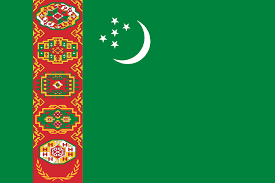Language/Turkmen/Grammar/Gender
Hi Turkmen learners! 😊
In this lesson, we will talk about gender in Turkmen language. Gender is an important aspect of language learning as it allows you to correctly use nouns and adjectives based on masculine or feminine nouns. By the end of this lesson, you will be able to identify and use gender correctly. Let's get started!
Consider exploring these related pages after completing this lesson: The Case system & Personal Pronouns.
Gender in Turkmen[edit | edit source]
Turkmen language has two genders, masculine and feminine, and it is important to know the gender of a noun before using it in the sentence. In many cases, you can identify the gender of a noun from its suffix.
Masculine[edit | edit source]
Masculine nouns usually have one of the following suffixes:
| Turkmen | Pronunciation | English |
|---|---|---|
| -ogly | -oğly | son of |
| -ow | -ow | owner of |
| -djy | -cı | specialist, professional |
| -däne | -den | unit of measurement (i.e. liters, kilograms, meters) |
Examples:
| Turkmen | Pronunciation | English |
|---|---|---|
| adamogly | adam-oğly | son of a man |
| kitapdjy | kitap-cı | book specialist |
| wagtdäne | watg-den | unit of measurement of time |
Feminine[edit | edit source]
Feminine nouns usually have one of the following suffixes:
| Turkmen | Pronunciation | English |
|---|---|---|
| -gul | -gül | flower |
| -ana | -ana | mother |
| -zat | -zat | quality, characteristic |
| -çe | -çe | small (i.e. ababatçe - small lamb) |
Examples:
| Turkmen | Pronunciation | English |
|---|---|---|
| gul | gül | flower |
| ejegul | êje-gül | mother of a horse (mare) |
| watançe | watany-çe | small country |
It is important to note that there are exceptions to the rules, so it is always a good idea to check the gender of a noun.
Gender in Adjectives[edit | edit source]
Adjectives in Turkmen language also have to agree with the gender of the noun they describe. For masculine nouns, adjectives usually end with -y or -ï, while feminine adjectives end with -a.
Examples:
| Turkmen | Pronunciation | English |
|---|---|---|
| olaryň ýol-ï | olaryň yol-ï | their road (masculine) |
| kitap ähli | kitap ahlı | good book (masculine) |
| ejegüldeki güýzli ýapraklar | êje-güldeki güýzli ýapraklar | beautiful leaves on the mare's tree (feminine) |
| gül ösüşli | gül ösüşli | blooming flower (feminine) |
Dialogue[edit | edit source]
Let's see an example of gender in context:
- Person 1: Merhaba! Türkmenistanyň baş-harydyňyň ýüzde on bölümi diýen sözüňizi biliňmi? (Hello! Do you know the saying that states that ten percent of Turkmenistan's population is the head of the country?)
- Person 2: Oh, elbette. Onyň sekiz bölümi emişdir! (Oh, of course. Eight percent of them are women!)
In this example, "baş-harydy" (head of the country) is a masculine noun, while "em" (woman) is a feminine noun.
Conclusion[edit | edit source]
In this lesson, we have learned about gender in Turkmen language. You can identify the gender of a noun from its suffix, and adjectives must agree with the gender of the noun they describe. Remember that there are exceptions to the rules, so always double-check the gender. To improve your Turkmen Grammar, you can also use the Polyglot Club website. Find native speakers and ask them any questions!
➡ If you have any questions, please ask them in the comments section below.
➡ Feel free to edit this wiki page if you think it can be improved. 😎
Sources[edit | edit source]
- Turkmen language - Wikipedia
- Turkmen Grammar - Gender
- Turkmen language | Alphabet, Turkic Family, & Facts | Britannica
With this lesson finished, you may want to explore these additional pages: Adjective Agreement & Negation.
Other Lessons[edit | edit source]
- Nouns
- Some Continous Moods
- Conditional Mood
- Question particle–my mi
- Questions
- Adjectives
- The Case system
- The Subjunctive Mood
- How to Use Be

